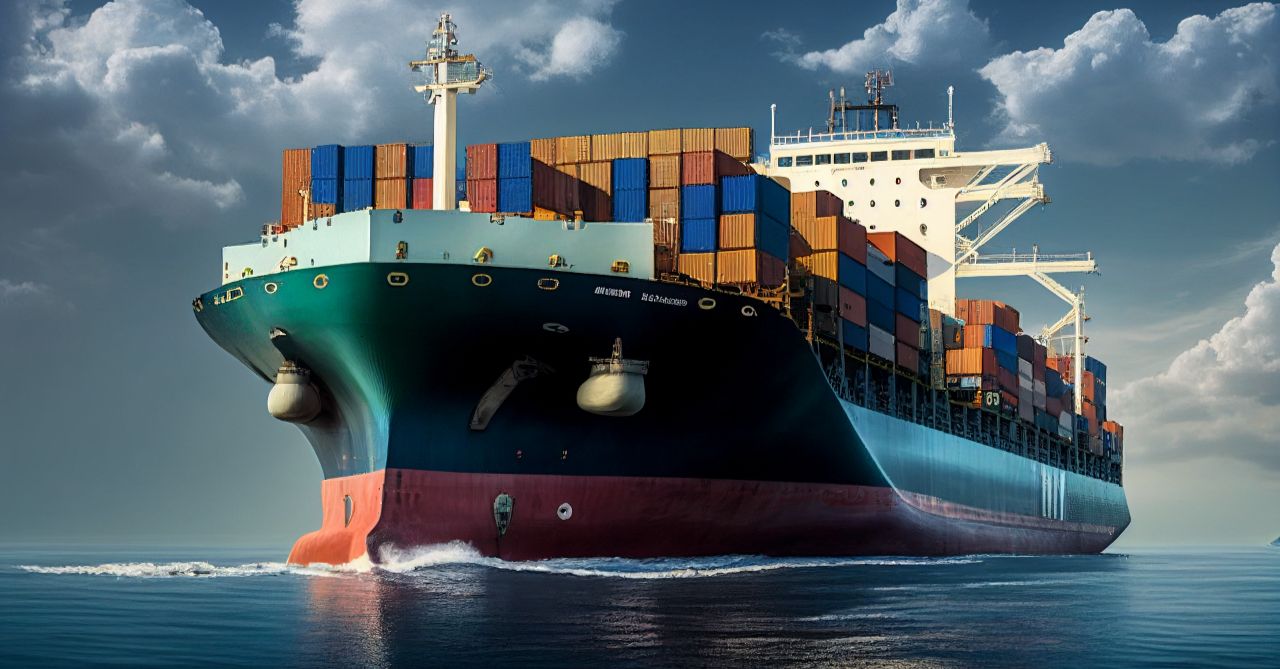What is Moving Overseas Shipping Containers?

Moving overseas can be a daunting task, involving meticulous planning, organization, and execution. One of the most critical aspects of an international move is the transportation of your belongings. This is where moving overseas shipping containers come into play. These containers are designed to safely and efficiently transport your personal or commercial items across the globe. This article provides an in-depth look at what moving overseas shipping containers are, their benefits, how they work, and key considerations for using them.
Understanding Moving Overseas Shipping Containers
Shipping containers are large, standardized metal boxes used for transporting goods. They are designed to be strong and durable, capable of withstanding harsh conditions during sea or air transit. When it comes to moving overseas, these containers serve the purpose of securely packing and transporting your belongings from one country to another.
Types of Shipping Containers
1. Standard Containers:
- 20-Foot Containers: These containers are typically used for smaller moves. They offer about 1,172 cubic feet of space and can hold the contents of a typical two-bedroom apartment.
- 40-Foot Containers: These provide about 2,390 cubic feet of space, suitable for larger moves, such as a three to four-bedroom house.
2. High Cube Containers:
- These containers are similar in length to standard containers but are about one foot taller. This extra height provides more storage space, ideal for bulky items.
3. Refrigerated Containers (Reefers):
- These are temperature-controlled containers used to transport perishable goods. They are essential for moving items like food, plants, or sensitive electronics.
4. Open-Top Containers:
- These containers have a removable top, making them suitable for oversized items that cannot fit through the standard doors. They are perfect for machinery or large pieces of furniture.
5. Flat Rack Containers:
- With collapsible sides, these containers are used for transporting heavy or oversized items that do not fit in standard containers, such as vehicles or large equipment.
Benefits of Using Shipping Containers for Moving Overseas
1. Security: Shipping containers are designed to be robust and secure, protecting your belongings from theft and damage. They are equipped with sturdy locking mechanisms to ensure the safety of your items.
2. Convenience: Using a shipping container simplifies the logistics of an international move. Your belongings are packed into the container at your current location and transported directly to your new home, minimizing handling and reducing the risk of damage.
3. Cost-Effectiveness: Shipping containers offer a cost-effective solution for moving large volumes of goods. They provide a single, consolidated space for all your items, reducing the need for multiple shipments.
4. Versatility: Containers can be customized with various features to meet your specific needs, such as climate control for sensitive items or reinforced walls for heavy equipment.
5. Efficiency: Shipping containers facilitate efficient transportation, whether by sea, air, or land. Their standardized sizes and shapes make them easy to load, unload, and transfer between different modes of transport.

How Moving Overseas Shipping Containers Work
1. Consultation and Planning: The process begins with a consultation with a moving company to assess your needs. They will help you determine the right type and size of container based on the volume and nature of your belongings.
2. Quotation: You will receive a detailed quote outlining the costs involved, including packing materials, shipping fees, insurance, and any additional services.
3. Packing: Professional movers will pack your belongings securely into the container. They use high-quality packing materials and techniques to ensure that your items are protected during transit.
4. Transportation: The packed container is transported to the port and loaded onto a cargo ship. It will then be shipped to the destination country, where it will go through customs clearance.
5. Delivery and Unpacking: Once cleared by customs, the container is delivered to your new home. The moving company will unpack your belongings and set them up as per your instructions.
Key Considerations for Using Shipping Containers
1. Choosing the Right Container: Consider the volume and nature of your belongings to select the appropriate container type and size. Overestimating or underestimating your needs can lead to additional costs or space issues.
2. Understanding Customs Regulations: Each country has its own customs regulations and documentation requirements. Familiarize yourself with these to ensure a smooth clearance process. Professional moving companies can assist with this.
3. Insurance: While shipping containers are secure, it’s wise to have insurance coverage for your belongings. This provides financial protection in case of damage or loss during transit.
4. Cost Factors: Be aware of the various cost factors involved, such as shipping fees, customs duties, and additional services like packing and unpacking. Obtain a detailed quote to budget accurately.
5. Timing: International moves can take several weeks, depending on the distance and mode of transport. Plan your move well in advance to accommodate potential delays.
Moving overseas shipping containers are an essential component of international relocations, offering a secure, convenient, and cost-effective solution for transporting your belongings across the globe. By understanding the different types of containers available, their benefits, and the process involved, you can make informed decisions and ensure a smooth and successful move. Whether you’re moving your home or business, using a shipping container can simplify the complex logistics of an international move, allowing you to focus on settling into your new environment.
A Comprehensive Guide to International Moving Costs

Moving overseas is an exciting adventure, but it’s essential to understand the costs involved to budget effectively and avoid unexpected expenses. International moving costs can vary widely depending on several factors, including the volume of your belongings, the distance to your new destination, and additional services required. This comprehensive guide will help you understand the different components of international moving costs, how they are calculated, and tips for managing your budget.
Factors Affecting International Moving Costs
1. Distance: The distance between your current location and your destination significantly impacts the cost of your move. Longer distances typically involve higher shipping fees, especially if your items are transported by sea or air. The route taken and the accessibility of your destination also play a role in determining the cost.
2. Volume and Weight of Goods: The volume (measured in cubic meters) and weight of your belongings are crucial factors in calculating moving costs. Larger and heavier shipments require more space and resources, leading to higher fees. Accurately estimating the volume of your goods can help you get a precise quote and avoid surprises.
3. Mode of Transport: There are three main modes of transport for international moves: sea freight, air freight, and land transport. Each has its cost structure and considerations:
- Sea Freight: Typically the most cost-effective option for large shipments. However, it takes longer (several weeks to months) and may incur additional port fees.
- Air Freight: Faster but significantly more expensive than sea freight. Ideal for urgent or smaller shipments.
- Land Transport: Used for moves within the same continent or to nearby countries. Costs vary based on distance and accessibility.
4. Additional Services: Additional services can add to the overall cost of your move. These services may include:
- Packing and Unpacking: Professional packing services ensure your items are securely packed, but they come at an extra cost.
- Customs Clearance: Handling customs documentation and procedures can incur fees.
- Insurance: Insurance coverage for your belongings during transit is recommended for peace of mind.
- Storage: Temporary storage solutions may be necessary if there is a gap between your move-out and move-in dates.
- Special Handling: Items that require special care, such as pianos, antiques, or art, may incur additional fees for specialized packing and handling.
Breakdown of Expenses
1. Packing Materials: High-quality packing materials are essential to protect your belongings during transit. These materials include boxes, bubble wrap, packing paper, tape, and protective padding. While some moving companies include packing materials in their service package, others charge separately for them.
2. Shipping Fees: Shipping fees are based on the volume and weight of your shipment, the distance to your destination, and the mode of transport. It’s important to get a detailed quote from your moving company that breaks down these costs.
3. Insurance: Insurance coverage for your belongings is crucial for financial protection against damage or loss during transit. There are different types of insurance policies available, including full-value protection and limited liability. The cost of insurance is typically a percentage of the declared value of your goods.
4. Customs Duties and Taxes: Customs duties and taxes vary by country and depend on the value and type of goods being imported. Some countries offer exemptions for used personal belongings, while others impose duties based on specific categories of items. Research the customs regulations of your destination country to understand potential costs.
5. Storage Costs: If you need to store your belongings temporarily, storage fees will apply. Storage costs are usually based on the volume of goods and the duration of storage. Climate-controlled storage units may be necessary for sensitive items and can be more expensive.
6. Miscellaneous Fees: Miscellaneous fees can include charges for disassembling and reassembling furniture, elevator fees, long carry fees (for properties where the moving truck cannot park close), and stair carry fees (for properties without elevators).

Saving Tips
1. Declutter Before Moving: Reduce the volume and weight of your shipment by decluttering and getting rid of items you no longer need. Consider donating, selling, or recycling belongings that won’t be necessary in your new home.
2. Compare Quotes: Obtain quotes from multiple moving companies to compare services and costs. Make sure the quotes are detailed and include all potential fees. Be wary of quotes that seem unusually low, as they may not include essential services or could indicate lower quality.
3. Book Early: Booking your move well in advance can help you secure better rates and availability. Last-minute bookings often come with premium charges.
4. Pack Yourself: If you have the time and resources, consider packing your belongings yourself to save on professional packing fees. Ensure you use high-quality packing materials and follow best practices to protect your items.
5. Utilize Consolidation Services: Some moving companies offer consolidation services, where multiple shipments are combined into one container. This can reduce costs, but it may also result in longer transit times.
6. Choose the Right Time to Move: Moving during off-peak seasons (usually autumn and winter) can result in lower costs, as demand for moving services is lower. Avoid moving during peak seasons (spring and summer) and holidays to benefit from reduced rates.
Hidden Costs to Consider
1. Port Fees: When shipping by sea, port fees can add to your overall moving costs. These fees cover the handling and processing of your shipment at the port of entry and can vary significantly by location.
2. Delivery Fees: Some moving companies charge additional fees for delivering your belongings to your new home, especially if the destination is in a remote or hard-to-access area.
3. Insurance Deductibles: Understand the deductible associated with your moving insurance policy. In the event of a claim, you may need to pay a portion of the costs out of pocket.
4. Exchange Rates: If you are paying for your move in a different currency, fluctuations in exchange rates can impact the final cost. Monitor exchange rates and consider locking in a rate if possible.
Understanding the various components of international moving costs is essential for planning a successful overseas move. By considering factors such as distance, volume, mode of transport, and additional services, you can obtain accurate quotes and create a realistic budget. Implementing cost-saving strategies and being aware of potential hidden fees will further help you manage your expenses effectively.
Recent posts
cuvitt.com 2024 - Copyright © All rights reserved.
